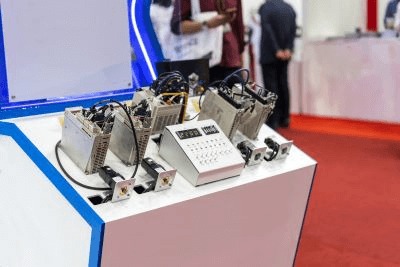What Is a Servo Drive?
 A Servo Drive is a amplifier device that controls a servo motor. A servo motor is a motor with a built-in encoder that detects the angle of rotation. The encoder feeds back displacement to the servo drive.
A Servo Drive is a amplifier device that controls a servo motor. A servo motor is a motor with a built-in encoder that detects the angle of rotation. The encoder feeds back displacement to the servo drive.
The control by the servo drive and the high-accuracy rotational movement of the servo motor enable the FA equipment of various manufacturers to achieve advanced drive control.
Servo drives are also called servo amplifiers, depending on the manufacturer.
Uses of Servo Drives
Servo Drives are widely used in FA equipment to drive servo motors. They are widely used in a wide range of manufacturing processes for transportation equipment, industrial equipment, electronic components, plastic parts, etc.
The following are examples of industrial applications:
- Control of servo motors used in press equipment to drive large automotive dies
- Control of servo motors used to drive amusement equipment (roller coasters, sliders, etc.)
- Control of servo motors used to drive machine tools and cooperative robots
- Control of loading/unloading machines in automated warehouses
As for home appliances, they may be used in robot vacuum cleaners, etc.
Principle of Servo Drives
The basic principle of Servo Drives is similar to that of an inverter. First, the AC power received is converted to DC. PWM control is often used.
The biggest difference from an inverter is that it receives the displacement of a paired servo motor. Most servomotors, except for large-capacity ones, are permanent magnet synchronous motors. The current flowing in the stator coil is transformed into a magnetic field, which rotates a rotor with permanent magnets.
Servo motors are equipped with an encoder that feeds back the angle and speed of rotation of the motor to the servo drive. Upon receiving the motor position information, the servo drive controls the motor in real time and stops it at a predetermined position. Control methods are broadly classified into two types: “open-loop control” and “closed-loop control”. The servo drive is a device that uses closed-loop control.
1. Open Loop Control
Open-loop control refers to control in which there is no feedback loop and the control is open to the response of the command value. As a typical example, a stepping motor is a motor that can be controlled without feedback of the actual rotation angle and speed signal of the rotor.
2. Closed-Loop Control
Closed loop is a type of control method with feedback. The output signal from the control unit feeds back data such as the travel of the machine to be controlled to the control unit, which constantly compares the input and output values and adjusts the overall operating volume to match the two.
Since there are a variety of servo drives available from different manufacturers, it is necessary to select the right type of servo drive and servo motor as a set according to the operating environment and equipment specification requirements.
Other Information on Servo Drives
Origin of Servo Drives
Servo Drives have a concept of origin. The origin is the displacement point at which the rotation angle of the servo motor becomes zero. Based on the origin, the servo motor’s displacement distance and rotation angle are calculated and output. Servo Drives may set the origin as an absolute position or may determine the origin on a case-by-case basis.
In the case of the absolute position, the servo drive remembers the origin position of the servo motor internally even when the power is turned off. The servo drive will operate as before when the power is turned back on, thus saving the time and effort of re-setting the origin. However, if the load slips against the motor shaft or if the motor is replaced, the origin will be out of alignment, so it is necessary to set the origin again.
If the origin is re-set each time, the origin must always be found and set before the machine is operated. While a preliminary operation is required before operation, the origin can be easily set when replacing parts.